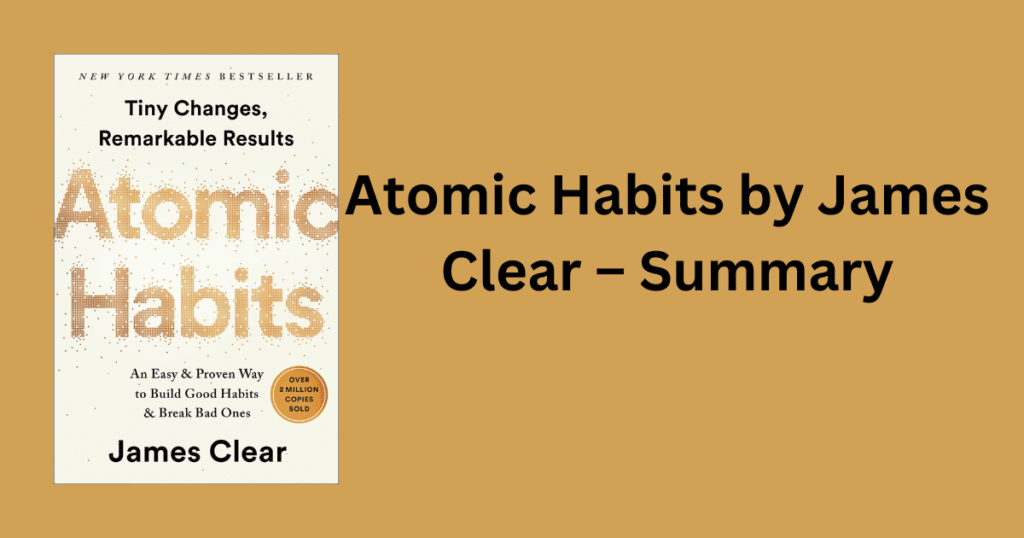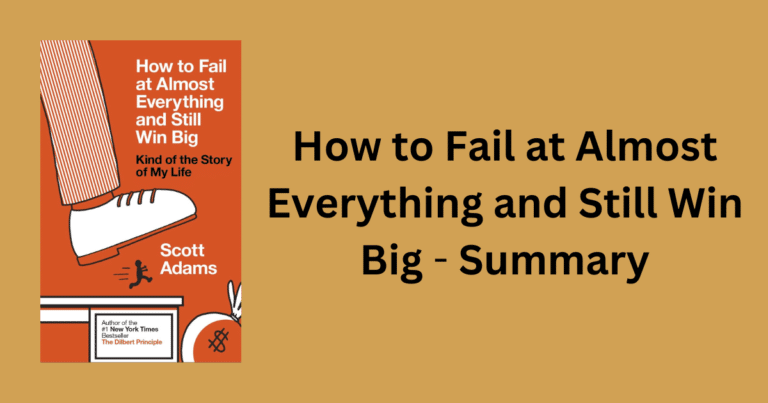Atomic Habits by James Clear. How tiny habits produce giant results.
The book starts off with the author explaining an injury he suffered during his sophomore year of high school.
His classmate took a swing with a baseball bat as hard as he could and the bat slipped from his hands and hit him right in the face, causing multiple skull fractures, a broken nose, and two shattered eye sockets.
This book is a compilation of the habits he learned during his recovery phase. We all deal with setbacks, but in the long run, the quality of our lives often depends on the quality of our habits.
Small habits in the right direction will help you to fulfill your potential.
Atomic Habits by James Clear
Atomic Habits are tiny habits that make a big difference.
The fate of British cycling changed in the year 2003. Dave Brailsford was appointed as Great Britain’s performance director.
He believed in the aggregation of marginal gains. 1% improvements in overlooked and unexpected areas.
The small improvements he made would turn into huge remarkable results and Britain would go on to dominate in the track cycling events in the 2008 Beijing Olympics.
Habits are the compound effect of self-improvement. It doesn’t happen overnight, and it’s a slow transformation.
Habits are the difference between who you are and who you could be. Habits can compound for you or against you, depends on how you use them.
When nothing seems to help, I go and look at a stonecutter hammering away at his rock perhaps a hundred times without as much as a crack showing in it. Yet at the hundred and first blow it will split in two, and I know it was not that blow that did it, but all that had gone before.
Jacob Riis
Goals are about the results you want to achieve. Systems are about the processes that lead to those results. Forget about the goals and focus on the systems instead.
You do not rise to the level of your goals. You fall to the level of your systems.
The 1st Law – Make it Obvious

This 4 step pattern is the backbone of every habit. Cue initiates the behaviour, craving is the motivational force behind every habit, response is the actual habit you perform and reward is the end goal of every habit.
This Framework is referred to as the 4 laws of Behaviour Change.
A habit is a behaviour that has been repeated enough times for it to become automatic. Your identity is your repeated beingness.
The more you repeat a behaviour, the more you reinforce the identity associated with that behaviour.
Anne Thorndike, a primary care physician at Massachusetts General Hospital in Boston, had an idea to improve the eating habits of thousands of hospital staff.
All she did was change the arrangement of drinks in the room. Bottled Water was now available in all drink locations while soda took a back seat.
Over the next three months, soda sales dropped by 11.4% while bottled water increased by 25.8%. Make your environment prompt you to do what you want.
The 2nd Law – Make it Attractive
The more attractive an opportunity is, the more likely it is to become habit-forming.
Ronan Byrne, an Electrical Engineering student from Ireland, loved watching Netflix. But He felt guilty, as he wasn’t exercising enough.
He connected his stationary bike to his laptop and television and wrote a computer program that would allow Netflix to run only if he was cycling at a certain speed.
He enabled temptation bundling to make his exercise routine more attractive.
The role of family and friends plays a big role in shaping your habits. The Polgar sisters were trained from birth to become chess prodigies.
All three sisters would go on to become grandmasters. They grew up in an environment where chess was prioritized over everything else and they were praised and rewarded for it.
Surround yourself with people whose habits you want to have.
The 3rd Law – Make it Easy
Every action you take is the vote for the person you want to become. Take small easy steps towards the direction of your dreams.
Prime your environment for your future use.
If you want to go to the gym, lay out your gym attire beforehand.
If you want to write, keep your books within easy reach.
Scale down your massive goals into easy steps.
Follow the 2-minute rule so you don’t get bored while starting a new habit. When you start a new habit, it should take you less than 2 minutes to do it.
It’s better to do less than you hoped instead of doing nothing at all. Make your bad habits more difficult to do and your good habits easier to perform.
The 4th Law – Make it Satisfying
Stephen Luby brought a one-way ticket to Karachi Pakistan in the late 1990s. The Public health crisis was what brought Stephen Luby to Pakistan.
The unsanitary conditions lead to widespread illness and disease. Luby and his team decided to create handwashing as a satisfying experience.
Luby and his team partnered with Procter & Gamble to supply the neighborhood with Safeguard soap. The soap had a great smell, and the foam felt good.
Soon within months, the health of the children in the neighborhood increased. There are similar stories with Wrigley’s chewing gum and toothpaste.
Make the experience satisfying so you do it more often.
Start building good habits today. There are no high performance people. It’s just high performance habits. Atomic Habits don’t show results immediately but they will in the long run.
Get pleasure out of the process and delay gratification. Success at the end of the day comes down to who can handle the boredom of training every day.







2 thoughts on “Atomic Habits by James Clear – Summary”
Really good breakdown of the book, will be using this as my reference guide
Thanks, Jack I appreciate it.